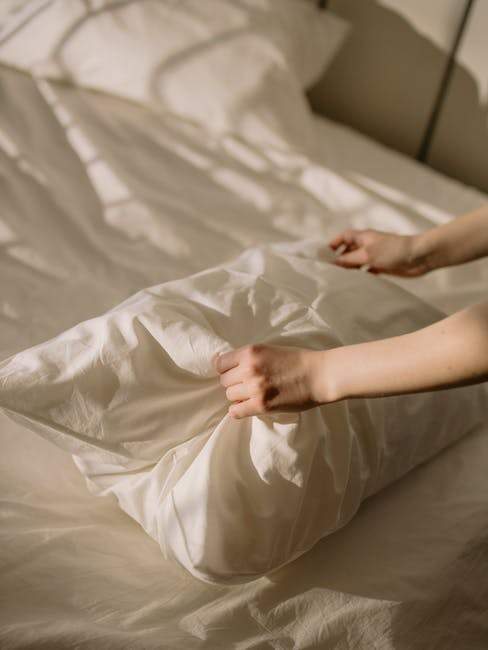So Fresh and So Clean: The Right Way to Wash Bedding (and More)

A good night's rest has an impactful effect on your mood each day. It's suggested that each person get at least eight hours of sleep each night. When you sleep peacefully, you wake up the next morning feeling refreshed and ready to take on any challenges the day has to offer you.
An essential part of staying healthy and getting good sleep, however, is the cleanliness of your bedding. When your sheets are fresh and clean, you can feel the difference. Do you know how to wash bedding the proper way?
Clean bedding is nice to have, but it won't clean itself and to keep it clean, you must wash sheets on a regular basis without causing damage. In the guide below, there's everything you need to know about washing sheets the right way. Continue reading to find out more.
Create a Wash Schedule
The first thing you need to do is create a wash schedule. How often will you wash your sheets? What will the wash process look like?
For example, what bedding will you wash first? A general rule to follow would be to wash the sheets once a week. Washing once a week helps keep your bedding clean and free of dead skin cells, body oils, sweat, bacteria, and even dust mites.
You'll want to wash your sheets more often if you have allergies, if you're not feeling well, or if you tend to eat in your bed. Sleeping with pajamas on, showering before bed each night, and keeping food out of the bed will keep the sheets cleaner longer. Because everyone's different, it's best to create a wash schedule that works best with your individual situation and circumstances.
Wash Separately
When washing your sheets, make sure to wash each one separately. Even if you have a large washing machine, you want to wash each sheet by itself so it has enough room to clean fully. Placing several sheets in the wash together can cause them to bundle up.
When this happens, the whole sheet may not get washed properly. They can also get tangled together and rip during the wash. You should also refrain from wrapping the sheet around the agitator, as this can also cause tears in the sheets.
Read the Care Instructions
Because not all sheets are made from the same fabrics, it's a good idea to always read the care instructions label before washing them. Sheets that are 100% cotton will most likely wash well in a washer on any setting and with any type of detergent. If your sheets aren't 100% cotton, however, then do be sure to read the instructions carefully.
Follow these instructions to ensure the sheets come out clean and undamaged.
Select the Right Temperature
Selecting the right temperature for the wash is another important part of washing your bedding correctly. Read through the care instructions again to ensure you select the correct temperature. Also, keep in mind that washing with hot water or in a sanitizing setting is a great way to remove germs from your bedding.
These temperature settings are ideal when you're feeling ill or suffering from allergies. The cold setting will wash your sheets without problem as well. If you're not feeling sick, then a cold setting should be sufficient.
Consider Pre-Treating Them
Pre-treating sheets is often a good way to ensure all stains are removed during the wash cycle. What you use to pre-treat the sheets will depend on the type of fabric and stain. For example, blood stains remove easily with hydrogen peroxide if treated immediately.
Other stains can be treated with a color-safe bleach if desired. Follow all the stain remover instructions as well before applying them to your sheets.
Choose the Dryer or Clothesline
After the wash cycle is complete, you now have the decision to either place your sheets in the dryer or hang them on a clothesline. Which is the better option? A dryer will give you different drying options, but hanging your sheets on a clothesline is the greener option.
If you choose to dry the sheets in the dryer, do keep some things in mind.
Setting the temperature too high can cause sheets to shrink or wrinkle. Although you may not be affected by a top sheet shrinking a bit, this can be frustrating when it happens to your fitted sheets.
It fit your mattress before you washed it, but after washing and drying it's now too small. Don't let that happen to you. Read the care instructions label again carefully to determine the ideal temperature setting for drying.
Pillowcases
The last thing to consider is how to wash your pillowcases. Some people like to wash their pillowcases more often since they lay their heads on them each night. One great tip to consider is to place two pillowcases on each pillow.
When you put the second one on, place it in the opposite direction from the first one. This will help keep your pillow stay clean longer. Be sure to wash your pillowcases as often as your sheets, but don't forget to wash your pillow either.
Take into consideration the type of pillow you have and follow the care instructions on the label.
Wash Bedding the Right Way to Remain Healthy
Imagine lying down in a pile of sweat, dust mites, and dead skin cells. Could you do it? Probably not.
That's what you're doing each night when you lie down in your bed if you're not cleaning your sheets properly. To ensure you wash bedding the right way, keep this guide handy.
Interested in a new mattress or other bedroom accessories?




